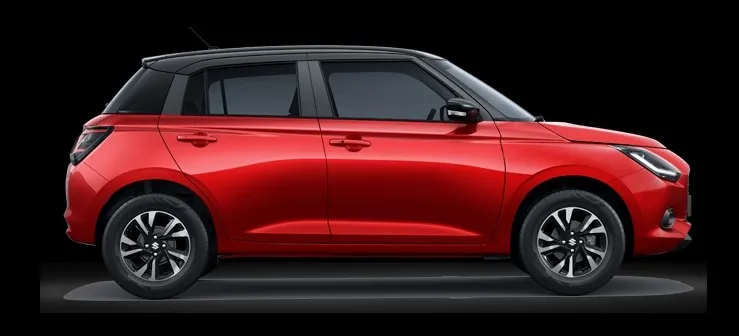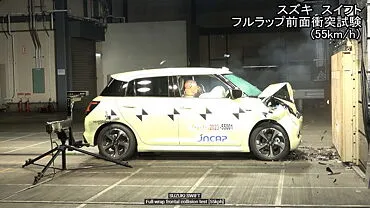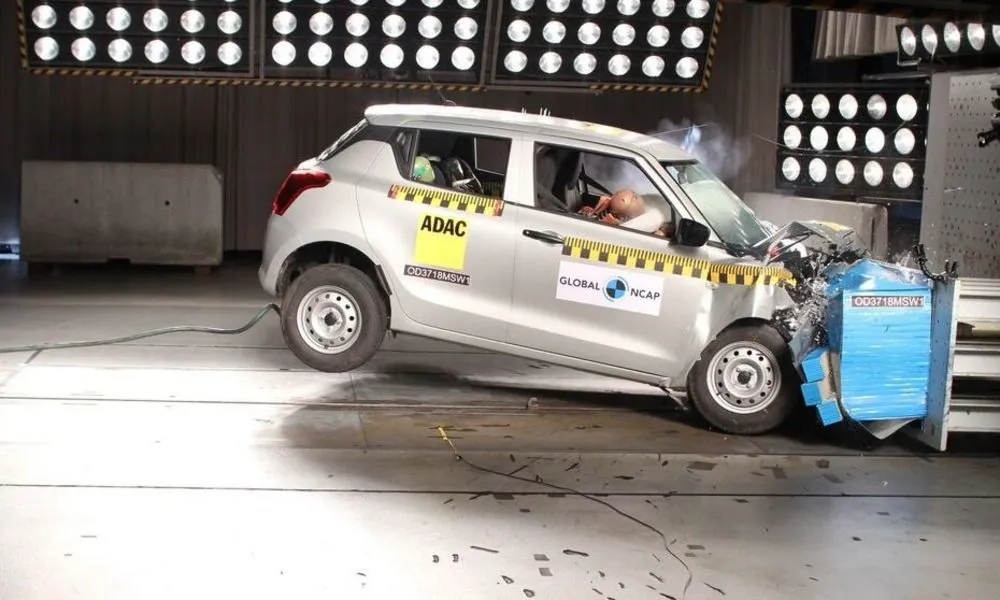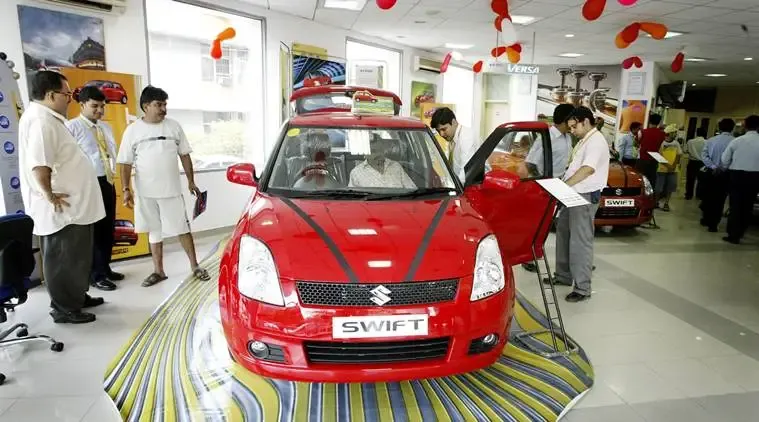
The Maruti Suzuki Swift, a popular hatchback, is sold in various international markets, each with its own safety and performance standards. Recent crash test results have highlighted significant differences in safety ratings between the Japanese and Indian versions of the Swift. This article explores the reasons behind these discrepancies and what they mean for consumers.
Japanese NCAP Rating: A High Standard

Impressive Performance: The latest generation of the Maruti Suzuki Swift, tested by Japan’s NCAP (New Car Assessment Program), achieved a four-star rating out of five. This rating reflects the vehicle’s strong performance in several critical safety areas. Key factors contributing to this high rating include:
- Damage Reduction Braking: The Swift’s advanced braking system helps reduce the severity of collisions.
- Lane Departure Prevention: This feature alerts drivers if the vehicle drifts out of its lane.
- High-Performance Headlights: Enhanced visibility at night improves safety.
- Full-Wrap Frontal and Side Collision Protection: The Swift is well-equipped to protect occupants in various types of collisions.
- Pedestrian Protection: The car includes features to reduce injury to pedestrians.
The Japanese Swift also benefits from an automatic accident emergency call system, which provides prompt assistance in the event of an accident, further enhancing overall safety.
Indian NCAP Rating: Lower Scores

Subpar Results: In contrast, the Maruti Suzuki Swift tested by Global NCAP in India received significantly lower ratings. The car was awarded only one star for adult occupant protection and two stars for child occupant protection. This lower rating is due to several factors:
- Inadequate Frontal Collision Protection: The Swift’s structure was deemed unstable during frontal collisions, resulting in high injury values for the driver and passenger.
- Insufficient Safety Features: The base model lacks critical safety features such as electronic stability control (ESC), which is essential for maintaining vehicle stability during sudden manoeuvres.
- Poor Child Occupant Protection: The car’s rear seats, which include ISOFIX anchorages for child seats, did not perform well in protecting child occupants during crash tests.
Build Quality Differences


Material and Design Discrepancies: One of the primary reasons for the variation in safety ratings is the difference in build quality between the Japanese and Indian versions of the Swift:
- Weight and Structure: The Indian variant (900 to 925 kg) of the Swift is lighter, with a different structural design compared to the Japanese model (975–1,025 kg). This difference affects how the vehicle absorbs impact during a collision.
- Material Quality: The build materials used in the Indian Swift may be of lower quality, leading to less effective crash protection. For instance, the Indian model might use lighter, less resilient materials to reduce costs.
Impact on Safety Ratings: The lighter and potentially weaker build of the Indian Swift means that it performs less well in crash tests compared to its international counterparts. This disparity highlights the need for improved safety features and construction in the Indian model to match global standards.
Market-Specific Configurations
Economic and Regulatory Factors: The differences in safety ratings can also be attributed to market-specific configurations and regulations:
- Affordability vs. Safety: The Indian variant is often a more basic model designed to be cost-effective. This model is usually stripped of some advanced safety features present in the higher-spec versions sold in other markets.
- Regulatory Standards: Indian safety regulations are generally less stringent than those in Europe and Japan. As a result, vehicles in India can be sold with fewer safety features at a lower price, but this compromises overall safety performance.
Consumer Implications
What Consumers Should Know: For Indian consumers considering the Maruti Suzuki Swift, it is crucial to be aware of these differences:
- Check Safety Features: Ensure that the variant being purchased includes the latest safety features, such as ESC, airbags, and advanced collision protection.
- Compare Ratings: Understand that the safety ratings for the Indian Swift may not reflect the higher standards of the versions sold in other markets.

The differences in NCAP ratings for the Maruti Suzuki Swift between Japan and India underscore a significant gap in safety standards and build quality. While the Japanese model excels with advanced safety technologies and robust construction, the Indian variant falls short due to cost-saving measures and less stringent regulations. For consumers, this highlights the importance of carefully evaluating safety features and ratings before making a purchase. To align with international safety standards, Maruti Suzuki should consider enhancing the safety features and build quality of the Indian Swift, ensuring better protection for all occupants.
